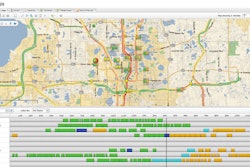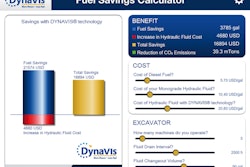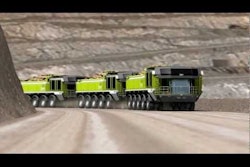As the U.S. economic recovery continues to move forward, new clean diesel technology is powering America’s freight movement in the most environmentally friendly manner anywhere in the world, according to Allen Schaeffer, Executive Director of the Diesel Technology Forum.
“Over the last 10 years, emissions from heavy-duty diesel trucks and buses have been reduced by 99% for nitrogen oxides (NOx) - an ozone precursor - and 98% for particulate emissions,” Schaeffer says. “Consider that it would take 60 of today’s clean diesel trucks to equal the same emissions from one pre-1988 truck.
“This remarkable 60 to 1 ratio is a vivid indicator of the remarkable advances in clean diesel technology.
“In addition, the new ultra-low sulfur diesel (ULSD) fuel that has been required since 2010 has reduced sulfur emissions by 97% – from 500 PM to 15 PM.”
On February 28, the California Air Resources Board (ARB) and diesel industry officials will conduct a press conference in Sacramento to outline the major advances in clean diesel technology over the past decade – in large part due to clean air regulations implemented by California and ARB. A day-long exhibition of the most modern clean diesel trucks, tractors, and automobiles will also be featured.
New Technology Important Because Over 80 Percent of All Freight Is Moved By Diesel Power
“These historic environmental improvements take an even more important significance when you consider that over 80% of all freight in the U.S. is moved by diesel powered trucks, railroads and marine vessels,” Schaeffer says.
“Whether it's a delivery truck bringing a package, a freight truck rolling down the highway, or a train carrying coal, merchandise and automobiles, you can bet a diesel engine is powering the vehicle.”
Significant Environmental Gains Will Be Achieved Under EPA’s Truck and Bus
Greenhouse Gas Emission Standards
In August 2011, U.S. Environmental Protection Agency (EPA) and National Highway Traffic Safety Administration (NHTSA) established a national program to reduce greenhouse gas (GHG) emissions and establish new fuel efficiency standards for commercial trucks and buses beginning in 2014 through 2018.
“Because of the sheer magnitude of commercial vehicles operating in the United States, this regulation has the potential to result in significant environmental and energy efficiency gains,” Schaeffer says. “The U.S. fleet of trucks consumes about 22 billion gallons of diesel fuel every year. Over the lifetime of the vehicles affected by the new rule, the program is expected to reduce oil consumption by more than 500 million barrels, result in more than $50 billion in net benefits, and reduce carbon dioxide emissions by 250 million metric tons.
“And because diesel provides a unique technology platform suitable for expanded use of hybrid powertrains and lower-carbon renewable fuels – additional new technology will be available for reducing GHG emissions in the future.”
Schaeffer says the new technology has also provided increased efficiency in conjunction with the decrease in emissions. Diesel vehicles manufactured after 2010 are experiencing an average five percent improvement in fuel efficiency, making them cleaner and more fuel efficient than ever before.
And Schaeffer says the new diesel technology was not just benefiting new trucks and engines.
“Through the use of new equipment, older diesel engines can improve their performance and reduce key emissions by up to 90%,” Schaeffer says. “With an estimated 11 million older diesel engines still in operation, it’s vital the federal, state and local governments continue programs like the Diesel Emissions Reduction Act to modernize and upgrade the older buses, trucks, tractors and marine vessels.”



















